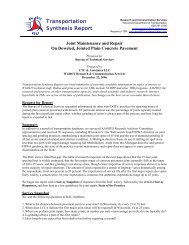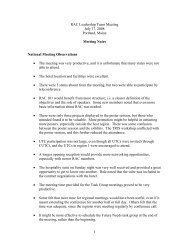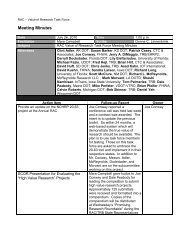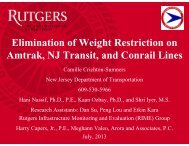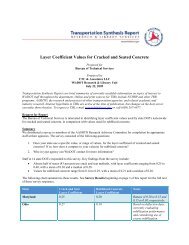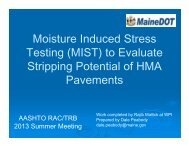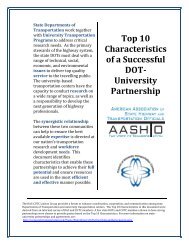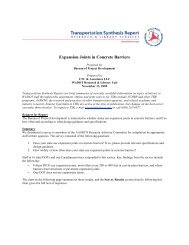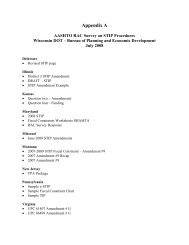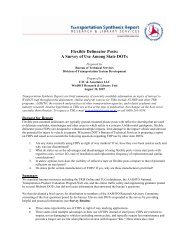Highway Maintenance Response Time Standards
Highway Maintenance Response Time Standards
Highway Maintenance Response Time Standards
Create successful ePaper yourself
Turn your PDF publications into a flip-book with our unique Google optimized e-Paper software.
DRAFTBACKGROUNDThe <strong>Maintenance</strong> and Operations First approach began with an analysis completed onexisting pavement and bridge conditions. This analysis is located in Appendix B of thisdocument.Pavement and bridge conditions are slipping and budget levels are expected to be tight.Progress has been made during the previous program period as shown by the decreasein pavements rated poor plus fair and the increase in the average surface rating.However, over the past few years condition levels have begun to worsen. Departmentrecords show the paving cycle for State highways has increased dramatically since1999 from 12 years to 20 years with the biggest decline in single-course overlays.According to maintenance records, the number of lane miles crack-sealed hasdecreased significantly.<strong>Maintenance</strong> treatments applied at appropriate condition levels will extend the servicelife of a pavement structure. Preventive maintenance treatments such as crack sealing,and ditch cleaning will slow the deterioration process for pavements in good conditionby keeping water out of the pavement structure. Corrective maintenance such assingle-course overlays and surface treatments will seal the cracks, rejuvenate theasphalt and restore the ride for pavements rated 6 or 7. Pavement treatments areclearly described in the guidance section of this document.Statewide bridge condition trends since 1994 indicate progress has been made,especially in terms of the number of deficient bridges. The concern, however, is thatover the past few years, the rate of improvement has slowed, and in 2004 for the firsttime since the late 1980s, bridge conditions actually slipped slightly. Of further concernis that condition measured in percent of deficient deck area has gained little ground overtime suggesting that the larger and more expensive to treat bridges still need significantwork.4



